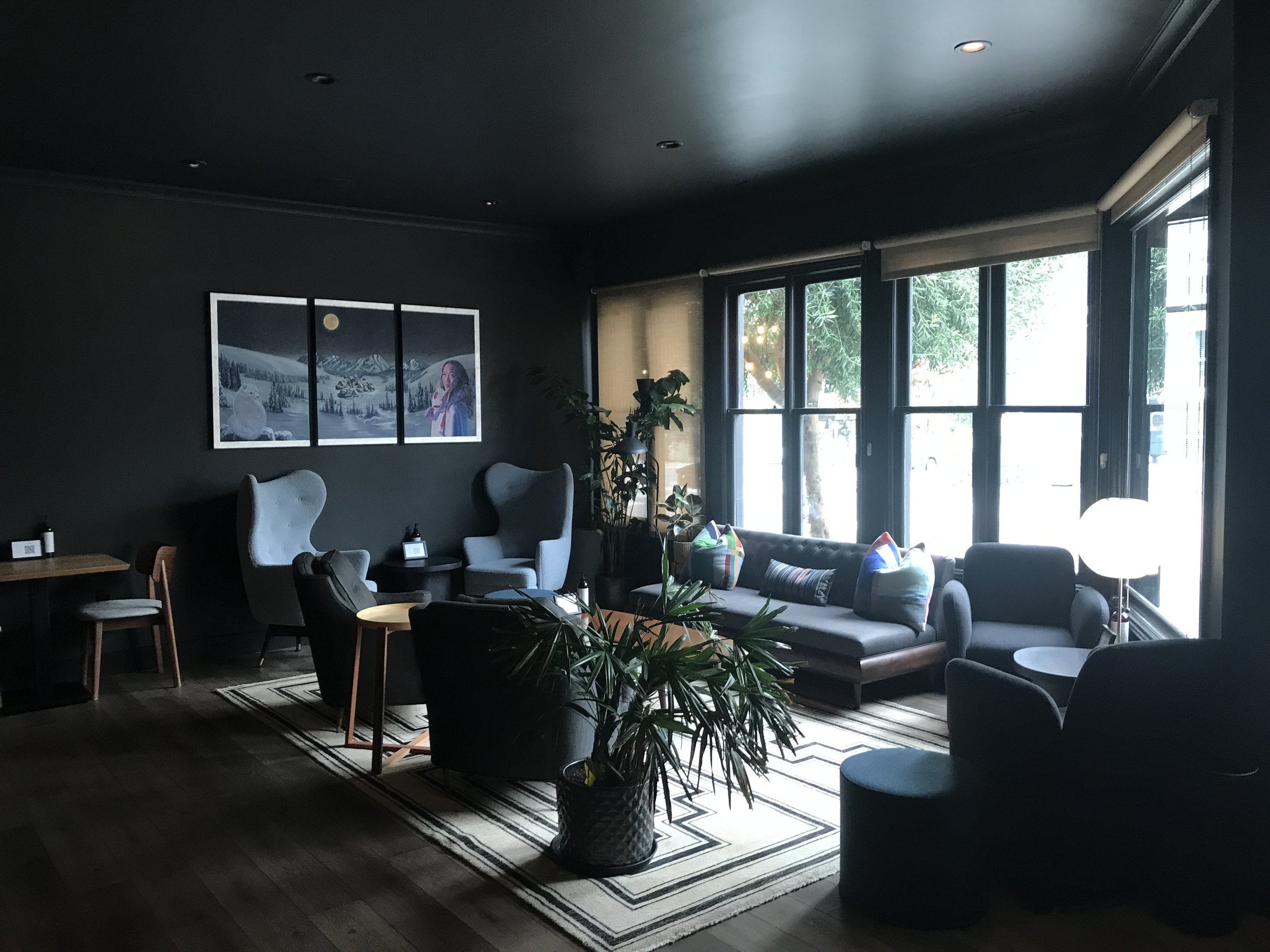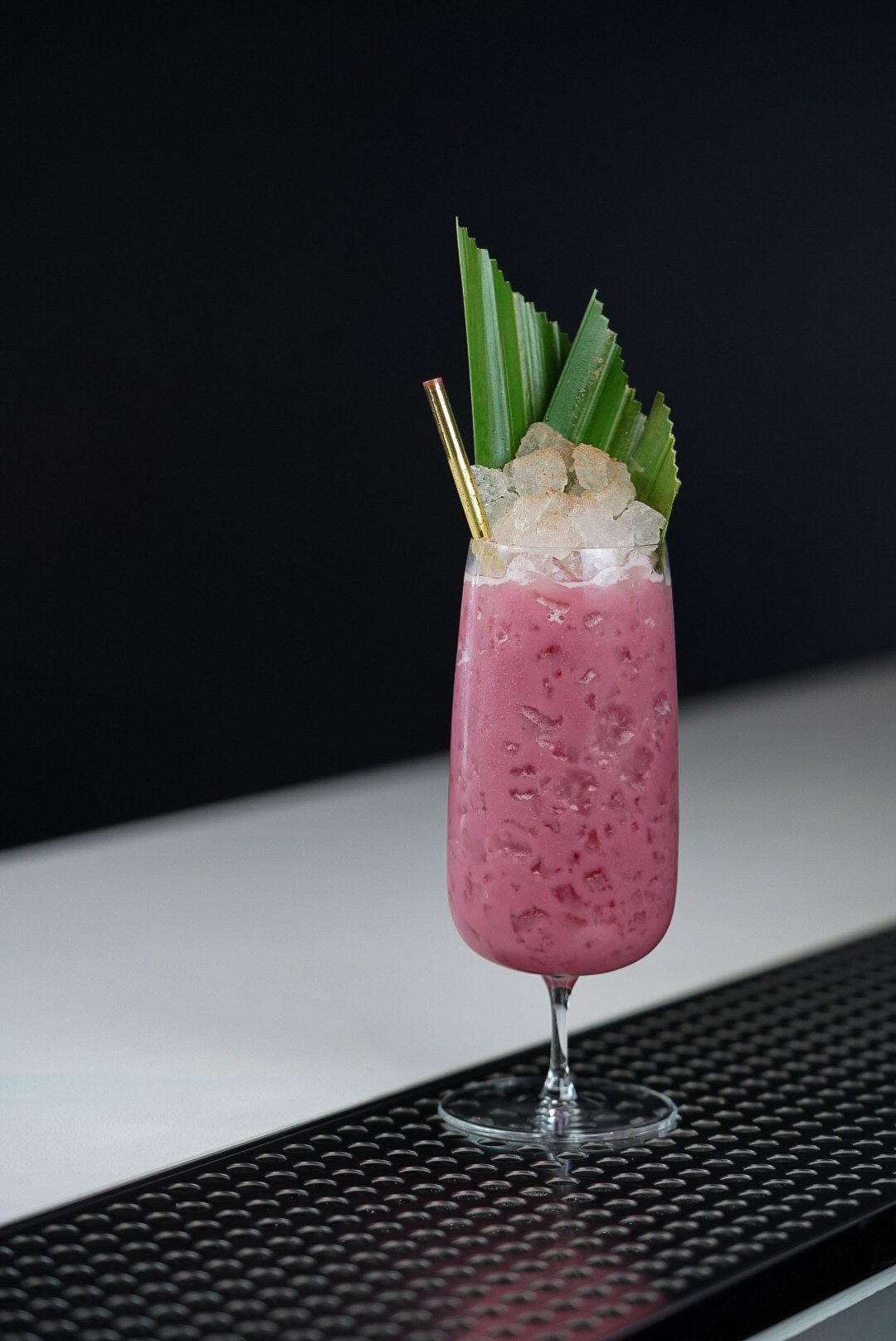Bar Iris: A Different Vision of a Japanese Cocktail Bar
Bar Iris is a small cocktail lounge in San Francisco’s wealthy Russian Hill neighborhood. Though it is attached to the restaurant Nisei next door, Iris is its own venue rather than a waiting room for diners, and with a new parklet it has become better integrated into its neighborhood during the pandemic. The beverage program at Bar Iris, led by Bar Manager Ilya Romanov, is inspired by Japanese flavors and cocktail traditions, but not in the same way that other Japanese cocktail bars are.
Bar Iris credit Camper English
Japanese Bars Abroad
Many bars opened in the last 15 years or so with the intention of becoming Japanese whisky bars, but then Japanese whisky supplies became extremely hard to get: Once-affordable single malts from Nikka and Yamazaki were suddenly too expensive to serve in cocktails, if bars could acquire them at all. A few new blends (most notably Suntory Toki) came onto the market as affordable if not robustly flavored options. Suntory also provided a carbonating highball machine to top accounts, and this device and brand came to define many newer Japanese-style cocktail bars, along with the inclusion of yuzu, shiso, lychee, and sometimes Midori in drinks. These spirits, formats, and flavors became so familiar they came to define these bars.
Cocktails (But No Japanese Whisky)
At Bar Iris, Romanov has built a menu of drinks that includes some of these elements and ingredients, though they are wildly reconfigured. Though there is a highball focus to the menu, the base spirits used in those drinks include calvados, gin, shochu, and aquavit; not a Japanese whisky among them. (In fact, there is only one drink with Japanese whisky at all on the current menu, and it is a split-base cocktail with cognac inspired by the Sazerac.) That gin, however is Nikka Coffey gin, which Romanov says is “really fricking expensive but it’s so delicious!”
Nikka Coffey is also the house gin, aka the “well” brand that is used by default if a customer doesn’t specify a brand. The house vodka is also Japanese: Haku vodka made by Suntory. These are not specified on the menu, as Romanov says his policy is to minimize branding and emphasize quality and simplicity. He says, “I really appreciate the fact that I can just pick up any bottle and feel good about it. We don’t really upsell here.”
On the full spirits list, three out of seven gins they carry are from Japan, as are two out of three vodkas. They offer about thirty Japanese whiskies; they’re just not used in the cocktails. The entire spirits list is tiny compared with other bars, particularly in San Francisco where bartenders have access to an enormous selection of products compared with other regions.
Okinawa credit Ilya Romanov
Striving for Minimalism
Minimalism is the point. Romanov describes the bar’s philosophy, “It is an artisanal Japanese inspired cocktail bar. I try to bridge the tradition and culture of japan and locally sourced ingredients, while trying to serve the best interests of our guests. There is minimalism and craft behind every single part of the cocktails, the ingredients, glassware, and ambiance. It’s a statement.”
The process of achieving minimalism, though, can be very, very complicated. The highballs and most other drinks on the menu are clarified in various ways so that there are no bits of citrus pith, herbs, or anything else getting in the way of the drinks’ carbonation and transparency. Individual ingredients sourced from the produce market may be infused, cooked, milk-washed, juiced, and generally mangled in dozens of different ways in order to achieve the singularity of flavor and texture desired.
Take the Okinawa cocktail, for example. The purple-colored stunner is somewhat like a Pina Colada but includes Okinawan rum and Okinawan sweet potatoes that are roasted for four hours then cooked sous vide with oat milk, in a method that avoids coconut solids clumping up along the sides of the glass. Texture, flavor, and presentation are all controlled in very intentional ways.
Side Hustle credit Ilya Romanov
Highlighting the subtleties of Japanese culture
The Side Hustle, one of the highballs, includes a house cantaloupe syrup along with shochu, fennel liqueur, Aperol, lemon, and egg white. Romanov says the inclusion of cantaloupe gives great texture to the drink and also is a nod to the very close attention and expense paid to and for melons in Japan. He says, “There’s so much appreciation for those fruits and how they’re raised. And you can’t just bring that from Japan. [With the cocktail menu] I try to basically highlight the subtleties of Japanese culture.”
Other drinks on the menu include a Gin & Tonic with snap peas and verjus that is served in a black highball glass, a clarified milk (actually yogurt) punch with gin, hojicha tea, pineapple, citrus, and violets, and an apple-forward highball with calvados, yuzu sake, green apple, sweet woodruff, and fizzy water.
As to why this Japanese cocktail bar’s cocktails look so different from others, Romanov says, “I do a lot of research on other bars and am trying to do what no one else is doing, not necessarily to do it before everyone else, but to challenge ourselves to do things nobody else has done yet.”



